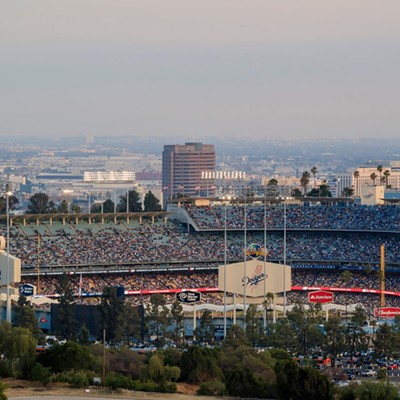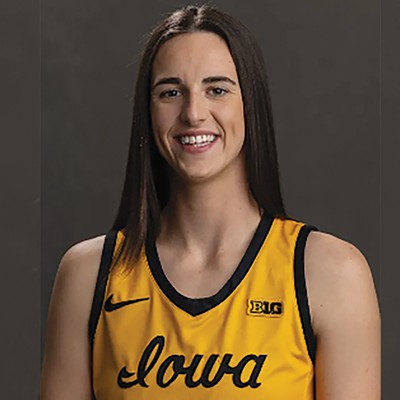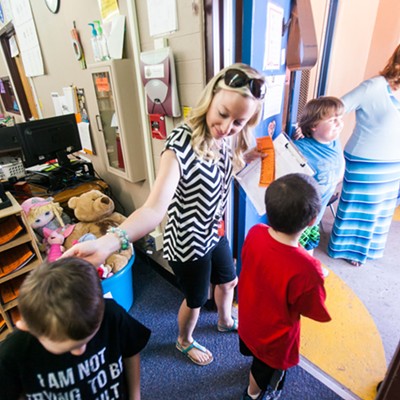These are places where Church of Jesus Christ of Latter-day Saints families live for generations. There are the Lunts in Duncan, the Judds in St. David, and the Udalls in St. Johns. And while a significant number of LDS members choose to live in the Valley of the Sun or Tucson, the people in Joseph City and Blue Ridge like things just the way they are, thank you very much.
The aforementioned remoteness might not have been planned in all cases, but it certainly has worked in the favor of those who value their freedom from intrusion into their insular way of life.
So has it been for St. David, which for decades has been eight miles from the train-stop town of Benson and light-years from the crime and traffic and life-sapping grind of the big city of Tucson, a good hour's drive away. But that is all about to change for this sleepy farm community in northwestern Cochise County. The gentiles are coming, not immediately into St. David proper, but into the sprawling school district that currently educates less than one student per square mile.
And when they come, they will bring with them inevitable change, both wrenching and profound, that could forever alter the identity of St. David.
Interstate 10 slices across the northern edge of Benson, separating it from its "suburbs" of J-6 and Pomerene. An hour or so to the east is the New Mexico state line. Off in the other direction, in about half that time, one can reach the outskirts of Tucson as it sprawls outward in the familiar ripple pattern that is the signature of the Western boom. Only a couple miles from Benson, just beyond the Cochise-Pima County Line, is the terminus of U.S. Highway 90, which leads south to the Army base of Fort Huachuca and the community of Sierra Vista. Not that long ago, it was a turnoff from the interstate known to few and traveled by fewer.
But a few years back, it apparently got discovered. The highway was doubled from two lanes to four. The junction at I-10, long barren and dark, is now peppered with fast-food places, motels and truck stops. A few miles to the south is a branch campus of Cochise Community College, and on the other side of the road is the entrance to Kartchner Caverns, a recently discovered natural wonder that will soon be drawing tens of thousands of cave enthusiasts to the area each year.
Most noteworthy, however, are the thousands of new homes about to be built--houses that will be either within the city limits of Benson or in unincorporated areas of Cochise County--but will almost all be in the St. David School District.
"It's just a quirk," says St. David Superintendent Troy Thygerson, who also acts as the district's director of special education. Thygerson's office is adjacent to the high school, which is about a half-block from the prominently located LDS Church building. "There's really little rhyme or reason to the way some school districts are set up. As you can see on the map, we pretty much surround the Benson School District, even though their community is bigger and is about to get much bigger. Nobody really knows why our district boundaries are the way they are. The best guess is that they were drawn to conform to the boundaries of ranches in the area."
But that was long ago, and there was probably no way to have foreseen what the district now faces. What it faces is the reality that the district of almost completely empty land that stretches to the Pima County line will soon be sprinkled with subdivisions, planned communities and mini-sprawl as far as the eye can see. A district that as of May 26 had exactly 484 students will in a decade or so have to educate 10 times that many kids. And it will have to do so as residents of St. David fight to maintain a way of life that is sometimes scorned, often joked about and rarely fully understood.
Jon Brogan is an LDS member who grew up in Benson and is familiar with St. David. "When I was in high school, I had friends from St. David who thought Benson was too big," he laughs. "They like the way things are down there. Their whole life is built around the church, and while some (outsiders) might criticize, you can't argue that LDS people are (not) generally pretty decent, hard-working people."
Brogan, who now lives in Tucson, commuted to his Tucson job from Benson for several years. "On a good day, you can make it from Benson to midtown Tucson in a half-hour or so. People don't believe that, but right outside of Benson is a sign that says 'Tucson 33 Miles.' I always wondered when people would start catching on. You can live in Benson and get to work in Tucson faster than if you lived in northwest Tucson and worked on the eastside."
That at least partly explains the several developments that are going in along Highway 90 (including the Del Webb-Pulte project, which alone is slated to have a staggering 14,000 houses). But it doesn't address the question that is the 900-pound gorilla in every discussion on this topic.
With at least 15 separate developments on the drawing board (many with sickly sweet faux-desert names like Cottonwood Bluffs, Canyons at Whetstone and San Pedro Vista), the people who live there will almost all work in either Tucson or Sierra Vista, which is also booming. These will be big-city folk who happen to live in satellite communities, and they will probably care less than a little about St. David, the town or the school.
"I'll be gone when it happens," says Jennifer, a student at St. David who asked that her real name not be used. "But it's probably going to be hard. Not everybody in St. David is LDS, but the church has a big influence on the morals and values of the town and the school. I'm not saying that (newcomers) would be evil or anything, but they might have a hard time adjusting to the way we do things."
What she's saying is that the winter formal and prom at St. David High (enrollment 150) are G-rated affairs where one is far more likely to dance to Little Eva than to L'il Kim.
Superintendent Thygerson, whose great-grandmother attended St. David High before moving to Mesa and then on to Duncan, where Thygerson grew up, has heard all the talk. He says that he and the School Board are trying to stay ahead of the curve. "There are too many possible scenarios for us to be making solid plans right now. But we have a vision of what we want the district to be now and in the future. For example, we're sure that we want St. David High to remain a 1A or 2A school."
The school is an athletic powerhouse in the 1A ranks. Benson High, by comparison, is 2A and might be moved up to 3A in the next enrollment cycle. Almost all schools in Tucson are 4A or 5A.
"What we'll probably do is keep the current school in town as is and build a new high school in the outlying area. That will prevent overcrowding at the current site and will keep those kids from having to be bused."
It will also prevent the clash of cultures at St. David High.
"I'm not saying that that isn't a consideration, but it's not the main one. We have good schools here, and I'm sure that (non-LDS people) would appreciate what we have to offer. But it's true that a lot of people around here aren't fond of change."
The scenarios are indeed many and varied. The State Board of Education is urging school districts to consolidate, but a merger with the Benson schools, while carrying with it a certain logic, is a long shot. Conceivably, the district could be split, but that probably won't happen, either. Most likely, they'll go with the new-schools idea (the developers have set aside land for the construction of elementary schools, but the high school question is still up in the air).
What happens if the newcomers overwhelm the School Board with sheer numbers?
"That's interesting, but I have a friend who's in the Vail District (an area southeast of Tucson that is also experiencing explosive growth) and he says that, even with all the new people, the school board still consists of old timers who've been there for many years."
Yeah, but what if things go differently in the St. David district, and the newcomers take over and try to move things in a different direction?
Thygerson looks down at his desk and says, "I have the paperwork right here. We could turn this into a charter school just about overnight."














